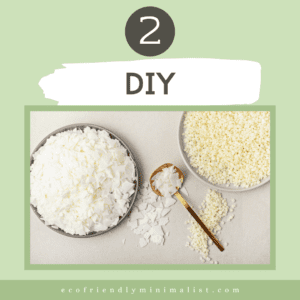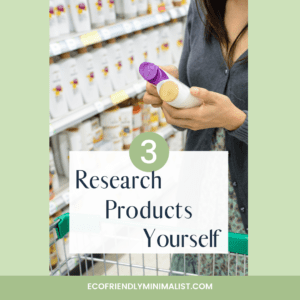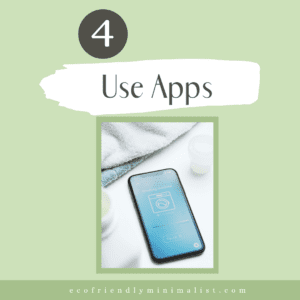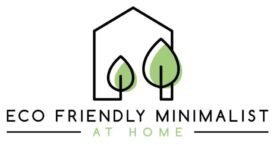
When it comes to personal care products, there are many choices. But, have you ever thought about how safe they are? In the United States, cosmetics and personal care products are not well regulated. As a matter of fact, cosmetic products and ingredients DO NOT need FDA* approval before going on the market!
The US government leaves the responsibility for the safety of personal care products to the companies who sell them! Next, they leave the responsibility for reporting unsafe products to consumers!
With virtually no chemical regulations on personal care products in the U.S., we must learn how to do our own research. Luckily, there are a few non-profit consumer groups who are being the watchdogs for us. They work to change regulations and empower us with knowledge about what’s in our products. Without these groups, it would be difficult to make informed decisions about what we buy.
Below, I provide a quick method for you to simplify your collection and discover which products are safe to continue using. I also give you detailed information about the Environmental Working Group and the Campaign for Safe Cosmetics, a project of Breast Cancer Prevention Partners.

A Simplified Method for Reducing and Checking Product Safety
Gather – Reduce – Check for safety – Hold the rest
Didi
If you’re like most people, you probably have drawers and cabinets full of cosmetics and personal care products. Besides the fact that we don’t know if they contain safe ingredients, they also create clutter and waste our money.
I recommend gathering all of your products together and then dividing them into two groups:
Group 1: Products used every day or weekly
Group 2: Everything else
- RESEARCH: Check group #1 for safe ingredients using EWG’s Skin deep app or the desktop version.
- STORE – RESEARCH LATER: Gather all other products and put them away in a separate box until you have time to go through and check everything for safety.
Related blog: How Many Personal Care Products Do You Put on your Body?
Two groups working hard to protect consumers
- EWG – Environmental Working Group: Check the EWG’s Skin Deep database for safety profiles and ratings of your personal care products. THE ENVIRONMENTAL WORKING GROUP’S (EWG) Database contains over 10,000 personal care products. They have a special safety rating system. You can plug in your product name and check it for safe ingredients. If your products aren’t listed, you can input individual ingredients to check for safety.
- Campaign for Safe Cosmetics is a project of Breast Cancer Prevention Partners (BCPP). They have worked to get toxic chemicals out of cosmetics and personal care products since 2004. The Campaign for Safe Cosmetics is a national coalition of women’s health, environmental health and justice, consumer rights groups, and forward-thinking cosmetics companies. They created the Made Safe Non-Toxic Seal for products used on your body and in your home. Go to SafeCosmetics.org to learn about their extensive body of work.
1. environmental working group (eWG)
The Environmental Working Group (EWG), Founded in 1993, has worked to bring attention to outdated legislation and harmful agricultural practices that pose a risk to public and environmental health. Their Mission: To empower people with research data so that they can make informed decisions and live in a safe and healthy environment.
The Environmental Working Group (EWG) has created valuable consumer guides. They are as follows:
Tap Water Database – It’s no secret that in the United States, tap water is not safe for drinking in many places. In my experience, though, there is a lack of widespread knowledge among the general public. The EWG has taken the reigns to monitor tap water around the United States and put the power of knowledge into the hands of the public. Simply input your zip code to instantly receive information about the quality of your tap water.
Next, EWG’s Skin Deep® cosmetic database allows you to search for a product or an ingredient in your personal care products. This helps people protect themselves from putting potentially toxic chemicals on their bodies.
Finally, EWG’s Guide to Sunscreens helps people find the right sunscreen to meet their needs.
2. Campaign for Safe Cosmetics
The website, Campaign for Safe Cosmetics, is a valuable resource for consumers interested in science-based information about cosmetics and personal care products.
The Campaign for Safe Cosmetics website is chock full of research, action, and information on the dangers of toxic chemicals in cosmetics. Their extensive research and educational topics include:
- Regulations: US Laws, State Laws, International Laws
- Chemicals of Concern: A breakdown & analysis of toxic chemicals found in Personal Care Products
- Health & Science: The latest research linking chemicals to diseases
- Reports: Downloadable reports and press releases on toxic contaminants found in consumer products
- Safer Cosmetics Companies: A link to Tips for Finding Safer Personal Care Products
- What’s in Your Products?

Breast Cancer Prevention Partners – TOP 5 SAFE COSMETICS TIPS
Here are some recommendations on how to move forward with personal care products and cosmetics plus a way to get involved (Exact quotes from their website):
1. Simplify
Choose products with simpler ingredient lists and fewer synthetic chemicals. Avoid synthetic fragrance by skipping products with “fragrance” on the label, and use fewer products overall.

2. DIY
Some personal care products are easy to make yourself, and this can be a great project for a party. Make your own sugar or salt scrubs or body oils, using simple, organic ingredients.

3. Research Products Yourself
Since the beauty industry is largely unregulated, it’s up to you to do your own research to find the safest products. There are no legal standards for personal care products labeled as “pure,” “natural” or “organic,” so look beyond the marketing claims and read labels carefully.

4. Use apps like Think Dirty
To find out whether your go-to products are safe or not, try Think Dirty’s shop clean app. This easy-to-use resource ranks the safety of specific products on a scale of 1-10 and offers up cleaner solutions.

5. Get Involved
While it’s possible – and becoming easier – to reduce toxic exposures in your home by buying safer products, it’s not possible to shop our way out of this problem. Even if they’re not in your home, toxic chemicals from personal care products can still end up in our air and drinking water, and in the homes of people who don’t have access to safe products.
The solution: help us change the rules of the game! It shouldn’t be legal to sell cosmetics that contain dangerous ingredients. We’re working to pass new laws that protect our health and give consumers better information to make smart choices.
Stay informed, speak up, and spread the word—all in our Take Action section.

Well, I hope this information will empower you with information and the power to take control of your personal care products and cosmetics.
